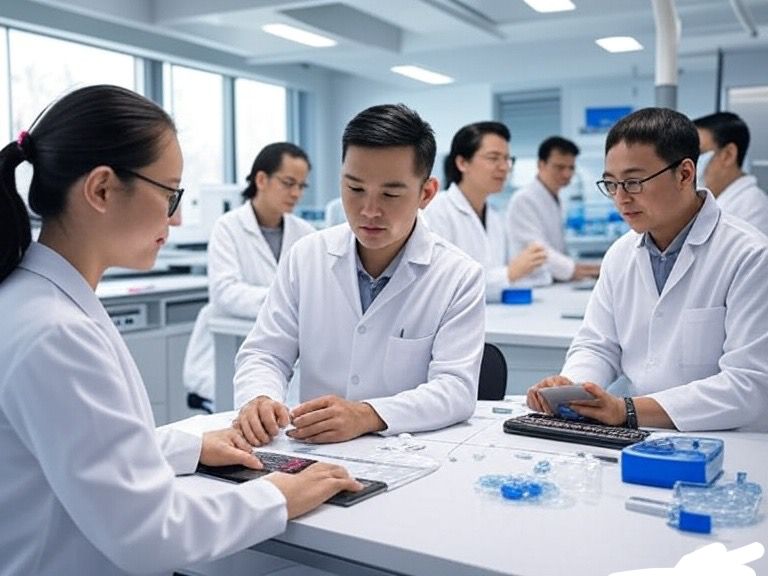#China’s Game-Changing Trial: Reversing Diabetes with Autologous Stem Cells!
12/7/2025 12:00:00 AM

A New Dawn in Diabetes Treatment
Imagine a world where diabetes,
a condition affecting millions, could be reversed without lifelong insulin
shots. China is making waves with a groundbreaking trial that uses autologous stem cells—cells derived from a
patient’s own body—to tackle both Type 1 and Type 2 diabetes. This isn’t
science fiction; it’s happening now, and the results are turning heads
globally!
What Makes This Trial a Breakthrough?
Personalized Medicine
at Its Best: Unlike traditional treatments relying on donor organs, this trial
uses a patient’s own stem cells. Scientists reprogram these cells into
insulin-producing islet cells, reducing the risk of rejection.
First-of-Its-Kind
Success: A 25-year-old woman with Type 1 diabetes became
insulin-independent within three months of the treatment. A 59-year-old man
with Type 2 diabetes followed suit, showing normalized blood sugar levels
without medication for over a year.
Innovative
Technique: Researchers at Nankai University and Peking
University employed a chemical reprogramming method to transform fat cells
into versatile stem cells, a process that’s both efficient and promising.
How Does It Work?
The process is a
marvel of modern science:
- Doctors extract fat
tissue from the patient, rich in stem cells.
- These cells undergo
a chemical transformation in the lab to become pluripotent, meaning they can
turn into any cell type.
- The reprogrammed
cells are then guided to develop into islet cells, which produce insulin.
- These new cells are
transplanted back into the patient, often into the abdomen, where they can be
monitored with MRI scans.
This
autologous approach eliminates the need for immunosuppressive drugs, a common hurdle in donor-based
transplants, offering a safer and more tailored solution.
Real Stories, Real
Hope
The
Young Woman’s Journey: Diagnosed with
Type 1 diabetes over a decade ago, she relied on daily insulin injections.
Post-treatment, she savored hotpot and sweets—freedoms she hadn’t enjoyed in
years. Her story, shared in recent trials, inspires hope.
The
Older Man’s Triumph: At 59, this patient
saw his blood sugar stabilize naturally. No pills, no shots—just a life
reclaimed, thanks to his own cells.
These individual
victories highlight the potential of this therapy, though it’s still early
days.
Challenges on the Horizon
While the results are
exciting, the road ahead isn’t without bumps:
Small
Sample Size: Only a handful of
patients have been treated so far, limiting the data.
Long-Term
Uncertainty: Researchers need to
track these patients for years to ensure the effect lasts and no side effects
emerge.
Scalability
Issues: Turning this into a widespread treatment
requires refining the process and making it cost-effective.
Scientists are
optimistic but cautious, emphasizing the need for larger trials to confirm
these findings.
Why This Matters Globally
A Burden
Lifted: With diabetes cases soaring—especially in
China, the country with the highest number of sufferers—this could ease
healthcare systems worldwide.
A Shift
in Treatment: Moving away from
managing symptoms to curing the root cause could save billions in medical
costs.
Inspiration
for Research: This success could
spark similar innovations in other diseases, from Parkinson’s to heart
conditions.
The Global Ripple Effect
China’s achievement
has sparked a mix of awe and debate. Some hail it as a medical revolution,
while others question if past overhyped claims are repeating. Yet, the
peer-reviewed data from this trial, unlike earlier announcements, lends
credibility. Internationally, researchers are eyeing collaboration, though
geopolitical tensions and pharmaceutical interests might slow progress.
What’s Next for This
Revolution?
Expanding
Trials: More patients will be enrolled to test the
therapy’s consistency across diverse groups.
Regulatory
Hurdles: China’s medical
authorities are fast-tracking approvals, but global adoption will need
international validation.
Public
Awareness: Educating people about
this potential cure will be key to managing expectations and preparing for its
rollout.
A Personal Reflection
As someone fascinated
by human potential, I see this as a testament to what science can achieve when
it dares to think differently. The idea of using our own bodies to heal
ourselves feels almost poetic. Yet, I wonder—will this be accessible to all, or
will it remain a privilege for a few? The answer lies in the hands of
researchers, policymakers, and global cooperation.
Final Thoughts: A Glimpse of the Future
China’s autologous
stem cell trial isn’t just a medical milestone; it’s a beacon of hope. While
it’s not a universal cure yet, the progress is undeniable. As trials expand and
technology improves, we might be witnessing the birth of a new era in healthcare.
Stay tuned—this story is far from over!
|